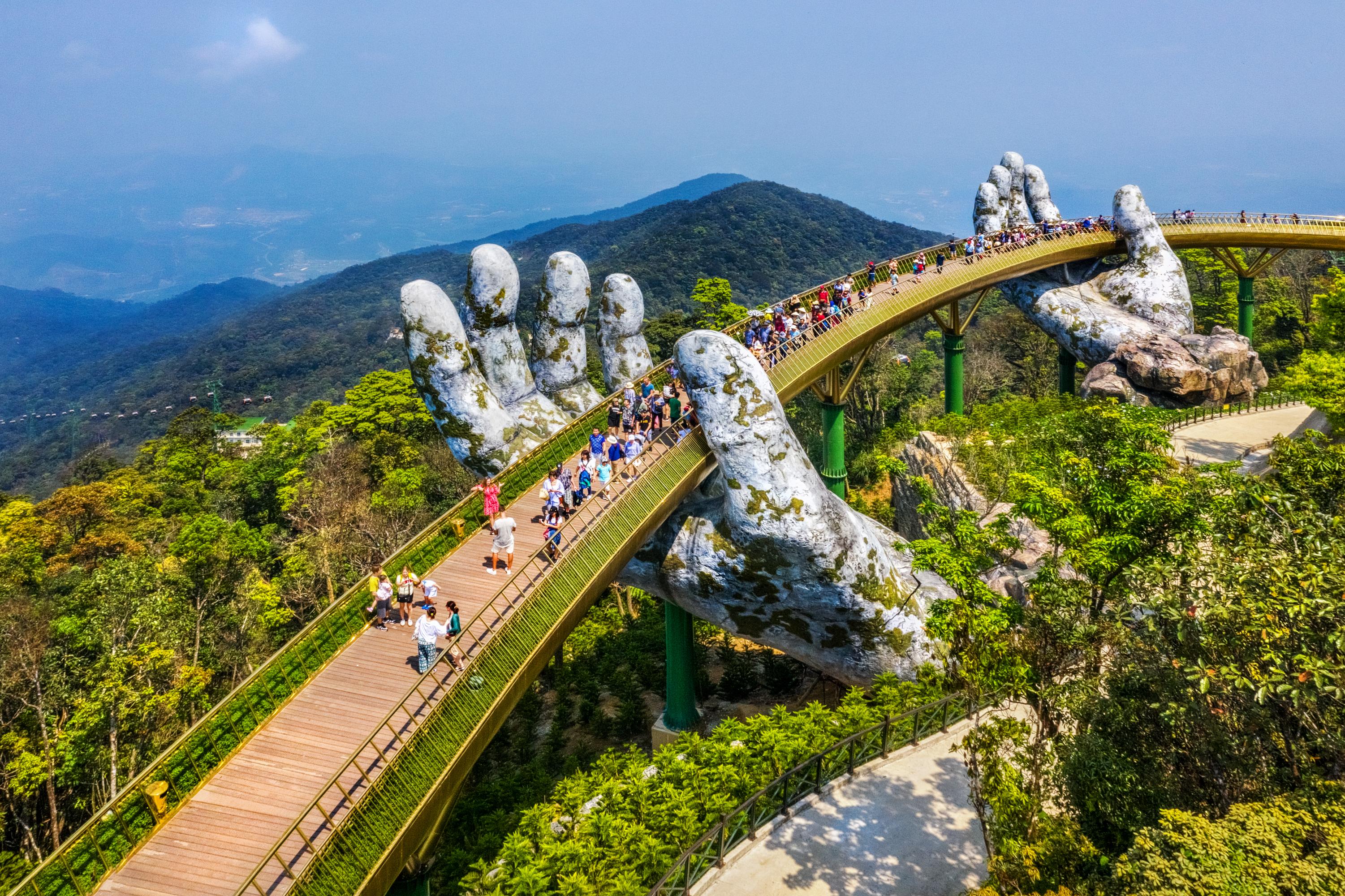What is a senior trip? It’s more than just a vacation; it’s a culmination of a lifetime of experiences, a chance for reflection, and a well-deserved reward. This comprehensive guide delves into the planning, destinations, activities, and considerations for creating an unforgettable senior travel experience, whether it’s an adventurous expedition or a relaxing retreat.
From choosing the perfect destination and crafting a detailed itinerary to budgeting effectively and prioritizing health and safety, we cover all aspects of planning a successful senior trip. We’ll explore various trip types, catering to diverse interests and physical abilities, ensuring a journey tailored to individual needs and preferences. Discover how to balance relaxation with adventure, incorporate cultural immersion, and create lasting memories with loved ones.
Defining “Senior Trip”: What Is A Senior Trip
Senior trips are culminating experiences marking the end of high school or, less commonly, other significant educational milestones. These journeys often involve a group of graduating students, teachers, and sometimes chaperones, embarking on a planned adventure designed to celebrate their accomplishments and foster lasting memories.Senior trips are characterized by a shared experience, planned itinerary, and a focus on creating lasting bonds amongst participants.
They often incorporate elements of adventure, relaxation, or education, tailored to the interests and budget of the group. The overarching goal is to provide a memorable and positive conclusion to a significant chapter in the students’ lives, building camaraderie and providing a sense of closure before moving onto the next phase.
Goals and Objectives of Senior Trips
The primary objective of a senior trip is to celebrate the successful completion of high school. Beyond this, senior trips aim to foster stronger relationships amongst classmates, allowing them to bond outside of the traditional school environment. Educational components can also be incorporated, providing opportunities for cultural immersion or exposure to new environments. Finally, senior trips often serve as a rite of passage, marking a transition to adulthood and independence.
Cross-Cultural Comparisons of Senior Trips
Senior trip traditions vary significantly across cultures. In the United States, popular destinations often include beaches, theme parks, or all-inclusive resorts in Mexico or the Caribbean. These trips often emphasize relaxation and recreation. In contrast, some European countries may incorporate more educational or historical elements into their senior trip experiences, with destinations like Rome, Paris, or other historically significant cities being common choices.
Asian cultures may focus on group cohesion and shared experiences, often incorporating elements of cultural immersion and community service into their senior trip itineraries. These differences reflect the varying cultural values and priorities placed on education, social interaction, and personal growth.
Types of Senior Trips
Senior trips can be broadly categorized into several types, each offering a unique experience. Adventure trips might involve hiking, camping, or white-water rafting, emphasizing physical challenges and teamwork. Relaxation trips focus on rest and recuperation, typically involving stays at resorts or beaches with access to amenities like spas and swimming pools. Educational trips emphasize learning and cultural immersion, often involving visits to museums, historical sites, and other places of cultural significance.
Thematic trips, such as music festivals or volunteer abroad programs, cater to specific interests and provide a unique blend of experience and personal growth.
Examples of Senior Trip Types
| Trip Type | Destination Examples | Activities | Average Cost |
|---|---|---|---|
| Adventure | National Parks (Yellowstone, Yosemite), Costa Rica | Hiking, camping, zip-lining, white-water rafting | $2,000 – $5,000 |
| Relaxation | Bahamas, Cancun, All-inclusive resorts | Beach time, swimming, spa treatments, resort activities | $1,500 – $4,000 |
| Educational | Europe (Rome, Paris, London), Washington D.C. | Museum visits, historical site tours, cultural experiences | $2,500 – $6,000 |
| Thematic | Music festivals (Coachella, Bonnaroo), Volunteer locations (various) | Concert attendance, community service, cultural immersion | Varies greatly depending on the theme |
Choosing a Destination
Selecting the perfect destination for a senior trip requires careful consideration of several key factors. The ideal location should balance the desire for adventure and relaxation with the physical capabilities and preferences of the travelers. Choosing wisely ensures a memorable and enjoyable experience for everyone involved.Factors Influencing Destination Selection
Senior-Friendly Destination Attributes
A senior-friendly destination prioritizes accessibility and comfort. This includes readily available transportation options, such as easily navigable airports and public transport, accommodations with accessible features like ramps, elevators, and grab bars, and attractions with minimal physical exertion. Destinations should also offer a range of activities suitable for varying levels of mobility and energy, from gentle walks to more strenuous hikes (with options for alternative routes).
The climate should also be considered, avoiding extreme temperatures or high humidity that could pose health risks. Finally, readily available healthcare services are essential for peace of mind.
Comparison of Destination Types, What is a senior trip
Cruises offer all-inclusive packages with convenient onboard amenities and a variety of destinations visited within a single trip. However, they can be susceptible to seasickness and may not be suitable for individuals with limited mobility. All-inclusive resorts provide a relaxed atmosphere with pre-arranged activities and meals, minimizing planning and stress. However, they can be less flexible and may feel confining to some.
Independent travel allows for greater personalization and flexibility but requires more planning and logistical coordination. This option may not be suitable for individuals requiring significant assistance.
Investigate the pros of accepting budget travel for seniors in your business strategies.
Destinations for Diverse Interests and Abilities
Destinations catering to various interests and abilities abound. For history buffs, cities like Rome or London offer rich cultural experiences, though they might require more walking. For those seeking relaxation, beach destinations such as Barbados or Hawaii provide tranquil settings and readily available accessibility features in many resorts. For adventurous seniors, national parks like Yellowstone or Glacier offer stunning scenery, but necessitate careful planning for accessibility based on chosen trails and activities.
Cruises are popular for their diverse itineraries and inclusive nature, offering options for both active and relaxed itineraries.
Accessibility Features at Popular Destinations
Many popular senior trip destinations offer excellent accessibility features. For example, many hotels in major cities provide wheelchair-accessible rooms and ramps, while national parks often provide paved trails and accessible viewing points. Cruise lines typically offer accessible cabins and facilities onboard, while all-inclusive resorts often have ramps, elevators, and adapted facilities throughout their properties. However, it’s crucial to verify accessibility features directly with the specific hotel, resort, or attraction before booking to ensure they meet individual needs.
Five Popular Senior Trip Destinations
Choosing the right destination is crucial for a successful senior trip. Here are five popular options, each offering a unique appeal:
- Alaska Cruise: Stunning scenery, wildlife viewing opportunities, and accessible cruise ship amenities.
- Charleston, South Carolina: Rich history, charming architecture, and relatively flat terrain for easy walking.
- Hawaii: Relaxing beaches, diverse landscapes, and accessible resorts with various activities.
- National Parks (e.g., Acadia): Breathtaking natural beauty, though accessibility varies by park and trail; careful planning is essential.
- European River Cruise: Relaxed pace, scenic views, and easy access to historical towns and cities.
Health and Safety Considerations

Planning a senior trip requires careful consideration of health and safety to ensure a memorable and worry-free experience. Prioritizing well-being before, during, and after the trip is crucial for a successful and enjoyable journey. This section Artikels key aspects to ensure a safe and healthy trip for seniors.
Pre-Trip Health Checkups and Vaccinations
Before embarking on any senior trip, a comprehensive health checkup is paramount. This visit should include a consultation with a physician to discuss any pre-existing health conditions, necessary medications, and potential health risks associated with the destination. Depending on the location, specific vaccinations may be required or recommended to protect against infectious diseases. For instance, travel to certain regions might necessitate vaccinations against yellow fever, typhoid, or hepatitis A and B.
Detailed information on recommended vaccinations can be obtained from the Centers for Disease Control and Prevention (CDC) website or a travel clinic specializing in international travel health. The physician can also provide guidance on managing existing conditions during travel and offer advice on packing essential medications. Adequate travel insurance covering medical emergencies is also strongly recommended.
Managing Common Health Concerns During Travel
Seniors may experience various health concerns during travel, including dehydration, fatigue, and exacerbation of pre-existing conditions. Maintaining adequate hydration is crucial, especially in warm climates. Seniors should drink plenty of water throughout the day and avoid excessive alcohol consumption. Planning for regular rest periods helps manage fatigue and prevents overexertion. For seniors with chronic conditions such as heart disease, diabetes, or respiratory problems, carrying sufficient medication and adhering to prescribed treatment plans is essential.
Carrying a list of current medications and contact information for physicians is vital for emergency situations. Packing a small first-aid kit containing essential supplies, such as bandages, antiseptic wipes, pain relievers, and any personal medications, is also advisable.
Ensuring Safety and Security
The safety and security of seniors during their trip are paramount. Choosing reputable tour operators or travel agencies specializing in senior travel ensures a well-organized and safe trip. These agencies often have experienced guides and staff trained to handle potential emergencies. When traveling independently, seniors should inform family or friends of their itinerary and check in regularly.
They should also be aware of their surroundings, avoid walking alone at night, and utilize secure transportation options. Using a personal locator beacon or a GPS tracking device can provide an extra layer of security, allowing for easy location tracking in case of emergencies. Consider booking accommodations in well-lit and safe areas.
Emergency Preparedness and Response Plans
A comprehensive emergency preparedness plan is essential for any senior trip. This plan should include contact information for emergency services in the destination country, details of travel insurance coverage, and a list of emergency contacts, including family, friends, and the tour operator. Seniors should also familiarize themselves with local emergency numbers and procedures. In the event of a medical emergency, having a detailed medical history readily available can be life-saving.
Packing a copy of this information along with any relevant medical documents is highly recommended. Furthermore, a clear communication plan should be established in case of unforeseen circumstances.
Safety Tips for Seniors Traveling
Before embarking on a senior trip, it’s crucial to review and follow these safety guidelines:
- Make copies of important documents (passport, visa, driver’s license, insurance information) and store them separately from the originals.
- Inform your bank and credit card companies of your travel plans to avoid any issues with transactions.
- Pack light to avoid carrying heavy luggage, which can cause strain and injuries.
- Wear comfortable and supportive shoes to prevent falls and foot problems.
- Stay hydrated by drinking plenty of water throughout the day.
- Be aware of your surroundings and avoid walking alone in poorly lit or isolated areas.
- Use reputable transportation options and avoid hitchhiking.
- Familiarize yourself with local customs and laws.
- Carry a small amount of local currency for small purchases.
- Be cautious of scams and avoid sharing personal information with strangers.
The Emotional and Social Aspects

Senior trips offer significant emotional and social benefits, extending far beyond the simple pleasure of travel. They provide opportunities for rejuvenation, connection, and the creation of lasting memories, profoundly impacting the well-being of participants. These journeys often serve as catalysts for personal growth and stronger interpersonal bonds.Senior trips foster a sense of camaraderie and shared experience among participants.
The shared activities, challenges overcome, and moments of laughter create a powerful sense of community, reducing feelings of isolation and loneliness, which are particularly prevalent among older adults. This supportive environment allows individuals to connect on a deeper level, building friendships and strengthening existing relationships.
Companionship and Social Interaction Enhance Well-being
The companionship inherent in group travel is a key element of a successful senior trip. The shared experiences, from navigating unfamiliar streets to enjoying a delicious meal together, create a sense of belonging and mutual support. This social interaction combats feelings of isolation and loneliness, which can negatively impact mental and physical health. Conversations, shared laughter, and the simple act of being surrounded by others contribute to a positive and uplifting atmosphere, boosting mood and reducing stress.
Many participants report feeling invigorated and re-energized after a senior trip, attributing this to the strong social connections they made.
Personal Growth and Enhanced Well-being Through Shared Experiences
Senior trips often present opportunities for personal growth and self-discovery. Stepping outside of one’s routine and comfort zone can lead to increased confidence and a renewed sense of purpose. The challenges encountered, such as navigating a new city or trying a new activity, foster resilience and adaptability. Successfully overcoming these challenges can lead to a significant boost in self-esteem and a feeling of accomplishment.
For example, a senior who initially felt hesitant about traveling independently might find themselves empowered by their ability to manage the trip’s logistics, fostering a greater sense of self-reliance.
Creating Lasting Memories and Strengthening Bonds
The memories created during a senior trip are often cherished for years to come. The shared experiences, the laughter, the breathtaking sights – all contribute to a rich tapestry of memories that can be revisited and enjoyed long after the trip has ended. These memories serve as a source of comfort, joy, and connection, strengthening bonds between friends and family members.
Photographs, souvenirs, and shared stories serve as tangible reminders of the trip and the emotional connections forged. One example is a group of friends who embarked on a European cruise, creating a lifetime of shared stories and strengthening their friendship through shared experiences. The trip became a cherished chapter in their lives, a symbol of their enduring bond.
A Positive Senior Trip Experience: The Italian Adventure
Consider a group of long-time friends who embarked on a senior trip to Italy. Initially, some felt apprehensive about navigating a foreign country. However, the shared experience of exploring ancient ruins, indulging in delicious cuisine, and engaging with the local culture fostered a sense of unity and accomplishment. The beauty of the Tuscan countryside, the vibrant atmosphere of Rome, and the shared laughter over unexpected mishaps created unforgettable memories.
The emotional impact was profound: they returned home feeling rejuvenated, closer as friends, and enriched by their shared adventure. The trip strengthened their bonds, providing them with a shared experience that will continue to enrich their lives for years to come. The positive emotional effects were readily apparent in their increased energy levels and improved overall mood.
Planning a senior trip is an investment in cherished memories and personal well-being. By carefully considering the factors Artikeld in this guide – from destination selection and budgeting to health considerations and activity planning – seniors can embark on a journey that is both enriching and fulfilling. Whether it’s a relaxing cruise, an adventurous trek, or a cultural immersion experience, the possibilities are limitless.
Remember, the goal is to create a memorable and rewarding experience that celebrates this significant life stage.



